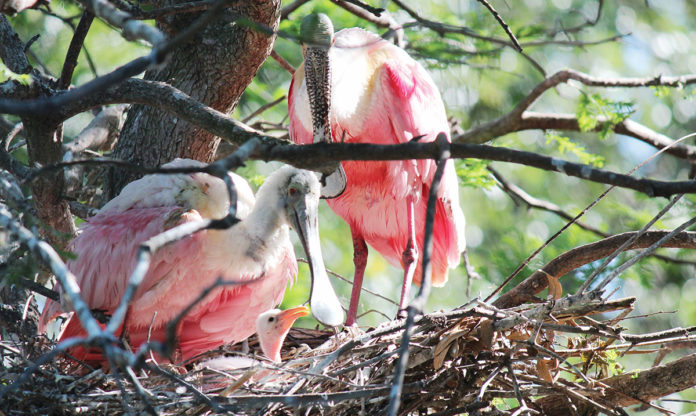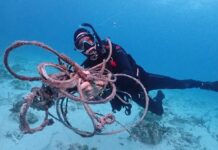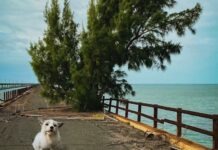
Florida Keys National Marine Sanctuary officials responded to a variety of questions related to proposals within the Restoration Blueprint during an Aug. 16 virtual question-and-answer session.
An updated set of rules and regulations to counteract a decline in natural resources off the Florida Keys is currently in a 100-day public comment period that ends Oct. 26. The blueprint initially released in 2019 contained four alternatives for new regulations and zone changes that the public commented on. From there, input from the public was taken to create one proposal that’s currently before the public to view.
Following the public comment period, NOAA will release a final environmental impact statement rule. From there, Gov. Ron DeSantis and Congress will have 45 days to review the proposal before it takes effect.
Sarah Fangman, superintendent of the sanctuary, read about 20 questions submitted to sanctuary officials before the question-and-answer session began. One of those questions was about enforcing the proposed regulations when the NOAA budget for enforcement was slashed. Fangman said the question has received plenty of concern during the first public comment period. Fangman said the sanctuary continues to work with Florida Fish & Wildlife Conservation Commission, U.S. Coast Guard and other agencies.
“Will it ever be enough to prevent all potential violations? No,” she said. “However, I firmly believe that most people, if they know the rules, they’re going to want to follow the rules. We’ll see the benefit of the protections because of that compliance.”
Andy Bruckner, FKNMS research scientist, addressed a question pertaining to banning the feeding of fish, including sharks, and what science backed the proposal. Bruckner alluded to a 2018 study on feeding wild fish for tourism by Jessica Patroni, Gregory Simpson and David Newsome. Bruckner said the study showed that feeding fish prevents them from interacting naturally with the environment. He said negative health effects were documented on fish due to the fact they weren’t receiving a normal diet.
In the Florida Keys, Bruckner said there are four species of sharks of particular concern. They included reef sharks, black tip sharks, bull sharks and nurse sharks.
“When you provide food to them they tend to become very aggressive and will in some situations attack divers in that case,” Bruckner said. “We want to protect recreational divers and snorkelers from potential interactions with these species.”
Bruckner added that chumming the water for fishing is still allowed.
A question regarding no anchoring in sanctuary preservation areas, or SPAs, was addressed by Joanne Delaney, FKNMS resource protection and permit coordinator. Current regulations don’t allow anchoring if mooring buoys are available. The proposed rule, however, includes a no- anchoring regulation for all SPAs.
“This is intended to protect sensitive habitats in SPAs and create clear and consistent regulations for easier understanding, compliance and enforcement,” Delaney said.
A question regarding the difference between “no access” and “no entry” was addressed by Stephen Werndli, FKNMS enforcement coordinator. The question was in relation to the Crocodile Lake Wildlife Management Area in the Upper Keys, which is proposed to become a no-entry zone in order to protect the crocodile habitat. Werndli said no-access prohibited boats, kayaks or any other vessel regardless of the propulsion method from entering. But it didn’t address any possibilities of people swimming into such zones. No-entry zones will prohibit vessels and people from entering the area.
The plan proposes 23 new wildlife management areas within the sanctuary. These areas are designed to minimize disturbances to sanctuary habitats and species dependent on those habitats, like nesting birds and turtle nests.
Delaney took a question on why the Restoration Blueprint didn’t call for a study to show re-dredging of a ship channel in Key West could reduce risks associated with cruise ships. Delaney said that the navigation channel in Key West is under the Army Corps of Engineers’ authority.
“I will note the revised draft management plan does set out goals and objectives and priority themes for sanctuary managers in the coming years. Water quality is one of those priority themes,” she said. “However, in the draft environmental impact statement, NOAA didn’t identify a specific study on the depth of the ship channel a priority at this time. We welcome public comments to the record on that need.”























